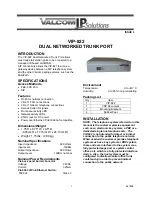
Label Policy : label per route
Import Route Policy : p1
The VPN QoS configuration information : based on VPN
CIR: 100 PIR: 100
Export Route Policy : p2
Tunnel Policy : po1
Description : This is a VPN for company1
Maximum Routes Limit : 100
Threshold Routes Limit : 90%
Log Interval : 5
3.4 Configuring Basic BGP/MPLS IP VPN
The basic BGP/MPLS IP VPN refers to a VPN that is established on one SP's MPLS backbone
network that does not span multiple ASs. The role of each PE, P, or CE of the basic BGP/MPLS
IP VPN is unique. For example, a router cannot function as both a PE and a CE.
3.4.1 Establishing the Configuration Task
Before configuring the basic BGP/MPLS IP VPN, familiarize yourself with the applicable
environment, complete the pre-configuration tasks, and obtain the required data. This can help
you complete the configuration task quickly and accurately.
Applicable Environment
The section describes the basic BGP/MPLS IP VPN networking. To be specific, the networking
features only one carrier and one intra-AS MPLS backbone network. In addition, the roles of
the P, PE, and CE are unique. For example, no device serves both as the PE and CE.
For special BGP/MPLS IP VPN networkings such as HoVPN, multi-role host, and inter-AS
VPN, additional configurations are needed. You can refer to the related sections in this chapter
for details.
In terms of the configuration of the BGP/MPLS IP VPN, it is critical for you to configure the
management of the advertisement of VPN routes on the MPLS backbone networks, including
the management of route advertisement between the PE and CE, and between PEs.
You can configure MP-IBGP to exchange routes between PEs. To exchange routes between the
PE and CE, you can configure static routes, RIP multi-instance, OSPF multi-instance, IS-IS
multi-instance, or BGP according to the specific networking situations.
NOTE
If a VPN is used to receive the external routes and the routes advertised by non-PE devices, and then
advertise these routes to PEs, the VPN is called a transit VPN.
If a VPN is used to accept the internal routes and the routes advertised by PEs, the VPN is called a stub
VPN. In most cases, the static route is only used to exchange routes between the PE and CE in the stub
VPN.
Pre-configuration Tasks
Before configuring basic BGP/MPLS IP VPN, complete the following tasks:
l
Configuring IGP for the MPLS backbone network (PE, P) to implement IP connectivity
l
Configuring basic MPLS functions and MPLS LDP for the MPLS backbone network (PE,
P)
Quidway S7700 Smart Routing Switch
Configuration Guide - VPN
3 BGP MPLS IP VPN Configuration
Issue 01 (2011-07-15)
Huawei Proprietary and Confidential
Copyright © Huawei Technologies Co., Ltd.
105
















































